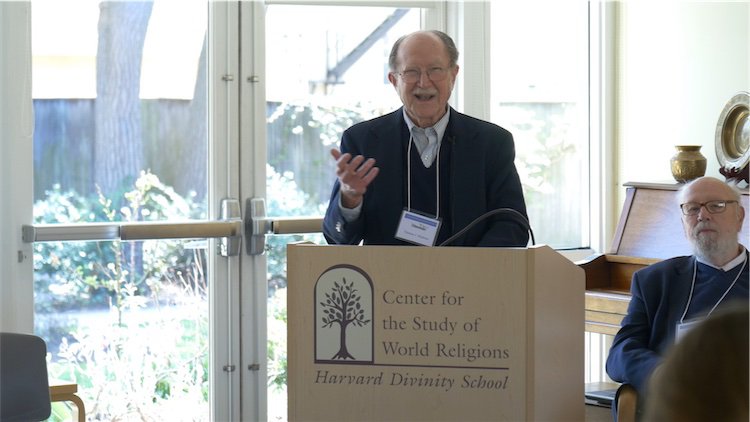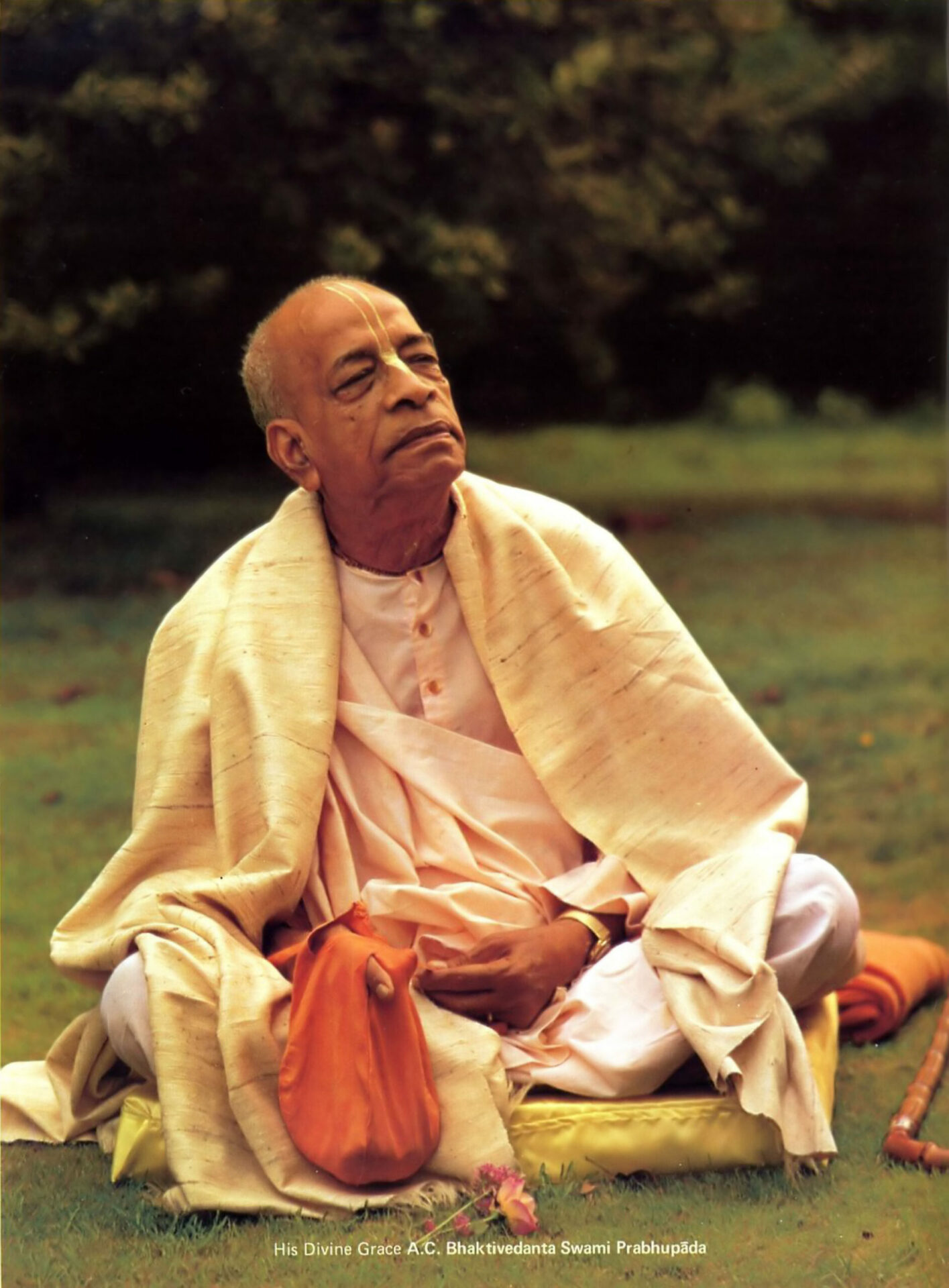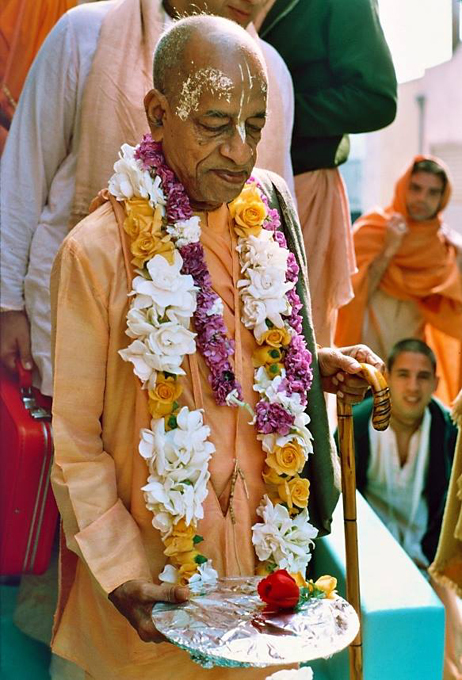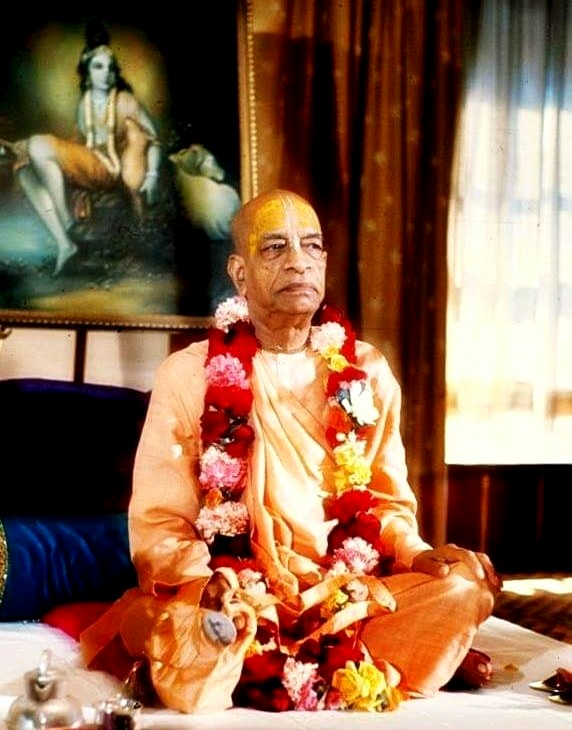Who is
Srila Prabhupada
For millennia the teachings and the rich culture of bhakti-yoga, or Krishna Consciousness, had been hidden within the borders of India. Today, millions around the globe express their gratitude to Srila Prabhupada for revealing the timeless wisdom of bhakti to a world.
Founder Acharya
Professor Thomas J. Hopkins

“He was a genuine holy person with enormous integrity and compassion, and he had a powerful impact on those who met him. He never claimed authority and respect for himself; what he said and did was always in the name of Krishna…”– Dr. Thomas J. Hopkins
Professor of Religious Studies (Emeritus)
Franklin and Marshall College
Professor Hopkins met Srila Prabhupada and the early ISKCON devotees in 1966 at 26 Second Avenue in New York City, ISKCON’s first temple. He purchased a set of Srila Prabhupada’s original publication of the “Srimad Bhagavatam” during that visit. At one point, Professor Hopkins arranged for Srila Prabhupada to teach a course at Franklin and Marshall College, where he was a professor. In the end, Srila Prabhupada declined this offer because Srila Prabhupada was too busy establishing the ISKCON and its temple-centers.
When His Divine Grace A.C. Bhaktivedanta Swami (who later became known as Srila Prabhupada) entered the port of New York City on September 17, 1965, few Americans took notice — but he was not merely another immigrant. He was on a mission to introduce an ancient religion, which originated in India, into mainstream America. Before Srila Prabhupada passed away on November 14, 1977, at the age of 81, his mission proved successful. He had founded the International Society for Krishna Consciousness (ISKCON) and saw it grow into a worldwide confederation of more than 100 temples, ashrams and cultural centers.
Srila Prabhupada was born Abhay Charan De on September 1, 1896 to a pious Hindu family in Calcutta. As a youth growing up in British-controlled India, Abhay became involved with Mahatma Gandhi’s civil disobedience movement to secure independence for his nation. It was, however, a 1922 meeting with a prominent scholar and religious leader, Srila Bhaktisiddhanta Sarasvati, which proved most influential on Abhay’s future calling. Srila Bhaktisiddhanta was a leader in the Gaudiya Vaishnava denomination, a monotheistic tradition within the broad Hindu culture, and asked Abhay to bring the teachings of Lord Krishna to the English-speaking world. Abhay became a disciple of Srila Bhaktisiddhanta in 1933, and resolved to carry out his mentor’s request. Abhay, later known by the honorific A.C. Bhaktivedanta Swami Prabhupada, spent the next 32 years preparing for his journey west.
In 1965, at the age of sixty-nine, Srila Prabhupada traveled to New York City aboard a cargo ship. The journey was treacherous, and the elderly spiritual teacher suffered two heart attacks aboard ship. Arriving in the United States with just seven dollars in Indian rupees and his translations of sacred Sanskrit texts, Srila Prabhupada began to share the timeless wisdom of Krishna consciousness. His message of peace and goodwill resonated with many young people, some of whom came forward to become serious students of the Krishna tradition. With the help of these students, Srila Prabhupada rented a small storefront on New York’s Lower East Side to use as a temple. On July 11, 1966, he officially registered his organization in the state of New York, formally founding the International Society for Krishna Consciousness.
Countries Traveled
Times Circled The Globe
Temples Established Worldwide
Books Published
In the eleven years that followed, Srila Prabhupada circled the globe 14 times on lecture tours, bringing the teachings of Lord Krishna to thousands of people on six continents. Men and women from all backgrounds and walks of life came forward to accept his message, and with their help, Srila Prabhupada established ISKCON centers and projects throughout the world. Under his inspiration, Krishna devotees established temples, rural communities, educational institutions, and started what would become the world’s largest vegetarian food relief program. With the desire to nourish the roots of Krishna consciousness in its home, Srila Prabhupada returned to India several times, where he sparked a revival in the Vaishnava tradition. In India, he opened dozens of temples, including large centers in the holy towns of Vrindavan and Mayapur.
Srila Prabhupada’s most significant contributions, perhaps, are his books. He authored over 70 volumes on the Krishna tradition, which are highly respected by scholars for their authority, depth, fidelity to the tradition, and clarity. Several of his works are used as textbooks in numerous college courses. His writings have been translated into 76 languages. His most prominent works include: Bhagavad-gita As It Is, the 30-volume Srimad-Bhagavatam, and the 17-volume Sri Caitanya-caritamrita.


